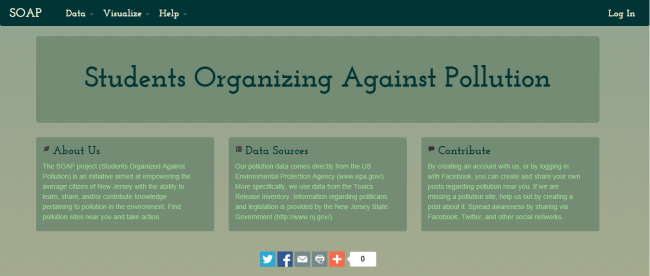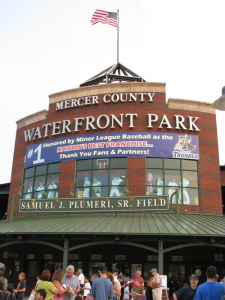Trenton Brownfields Become Green


Trenton, N.J. was once a prosperous manufacturing hub. According to the Trenton Historical Society, the city was an “industrial powerhouse” from the 1800s to the mid 1900s. Trenton’s proximity to New York and Philadelphia and its convenient waterfront location made it so that goods created in Trenton could be sold and shipped worldwide.
In the mid 1970s, Trenton’s factory activity had nearly ground to a halt. Now, the once flourishing factories leave a legacy not of profit and industry, but of abandoned buildings and contaminated land.
Many of the lots that are left behind are completely unusable because the soil is tinged with chemicals. Many of the factories in Trenton were porcelain, ceramic and pottery manufacturers that processed lead, cadmium and mercury. These contaminants then seeped into the soil through particulate matter in the air or through wastewater that leached out of the factories while they were active.
These sites, called brownfields, are defined by the Environmental Protection Agency as a “real property, the expansion, redevelopment, or reuse of which may be complicated by the presence or potential presence of a hazardous substance, pollutant, or contaminant.”
But brownfield land still has potential to be used. In fact, Trenton has many success stories already.
In the West Ward, an old petroleum service station has been transformed into a firehouse.
And a former steel plant in Trenton has since been redeveloped into the Arm & Hammer Park where, home of the Trenton Thunder minor league baseball team.
In Trenton, remediation and redevelopment has become common.
“We do a lot of capping,” said Ron Wienckoski, part of the Landfill Remediation and Redevelopment Program of the New Jersey Department of Environmental Protection. “It’s a redevelopment initiative.”
Capping refers to “capping in place”, the process by which contaminated land is covered by a new layer of material. This can include paved surfaces like asphalt and concrete or clean fill, which is a mixture of soil, rock, and stone.
Another type of containment is done through geotextiles, which are synthetic materials which are placed on top of the brownfield after excavation. According to the McGill University School of Environment, the material acts as a barrier to keep contaminants contained in deep soil while protecting a layer of soil on top.
Soil vapor extraction is a method of physical remediation where pipes and wells are installed throughout the site and contaminants are extracted as vapor.
Another common redevelopment technique is the installation of depressurization systems. These systems rely on either natural convection or fans to draw air out of soil and away from structures built on the land. This method may involve remediation of the soil, but it does not have to.
There are many more methods of treating the contaminated land available to redevelopers. Many common techniques involve removing the affected soil and either disposing of it and replacing it (excavation) or treating the soil and putting it back(soil washing).
Some redevelopers rely on green biological technology to treat brownfields. Research posted on the McGill University School of Environment website claims that biological remediation techniques are relatively new, but the practice of soil remediation is also a recent occurrence.
One biological remediation technique uses microbes to degrade contaminants in the soil into a less toxic form. Another technique, phytoremediation, involves growing plants which degrade organic contaminants and in some cases extract metals from the soil. There are even some species of fungi that degrade soil contaminants.
Publicly funded development is more common than private development in Trenton. According to Better Environmental Solutions for Trenton Advisory Committee, the City of Trenton has redeveloped over 50 brownfields since 1994. As redevelopment has grown more popular, more resources have been made available to ensure that the process is as safe and efficient as possible. The Brownfields Development Area approach from the New Jersey Department of Environmental Protection ensures that it works with communities to design remediation plans.
“The town fills out an application for redevelopment for potential brownfields, it becomes a BDA,” said Wienckoski. “We coordinate with the towns.”
Under the 2012 Site Remediation Reform Act, all parties involved in redevelopment must adhere to a procedural guide made available online.
“There is technical guidance for sites undergoing remediation and when the DEP may take direct oversight,” said Carey Compton, research scientist and green remediation coordinator of the NJDEP Site Remediation Program.
Remediated and redeveloped land is replacing the toxic, forgotten sites of Trenton’s past. This land has been turned into new homes, commercial buildings, and even open space for parks. Trenton is no longer an industrial powerhouse, but the legacy of innovation and creation lives on.

